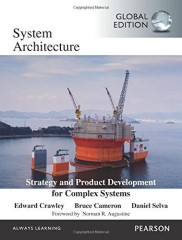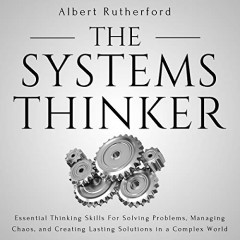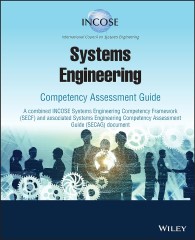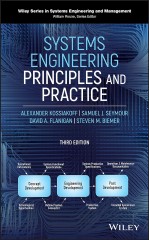In the fast-paced world of technology and engineering, successfully developing and deploying complex systems requires more than just technical expertise—it demands robust management frameworks and interdisciplinary collaboration. This article addresses the pivotal integration of Systems Engineering (SE) and Systems Management, exploring how their synergy can enhance project outcomes, mitigate risks, and ensure higher efficiency and effectiveness in product and system development.
Table of Contents
- 1. The Importance of Integrating SE and Systems Management
- 2. Understanding Systems Engineering (SE)
- 3. Exploring Systems Management
- 4. The Interrelationship Between SE and Systems Management
- 5. Model-Based Systems Engineering (MBSE) and Digital Engineering (DE)
- 6. Case Studies and Practical Applications
- 7. Advantages of Combining SE and Systems Management
- 8. Challenges, Solutions, and Best Practices
- 9. Future Trends and Innovations
- 10. Conclusion
1. The Importance of Integrating SE and Systems Management
Systems Engineering and Systems Management are two sides of the same coin. While SE focuses on the technical and systematic design, analysis, and implementation of complex systems, Systems Management deals with planning, organizing, and controlling projects to meet specific objectives. Integrating these disciplines ensures that technical solutions are aligned with project constraints such as timelines, budgets, and resource availability, leading to more effective and holistic project execution.
The integration enables seamless communication and collaboration among various stakeholders, optimizing resource allocation, enhancing quality assurance, and aligning engineering specifications with business goals. This holistic approach not only streamlines workflows but also significantly reduces the potential for project delays, cost overruns, and systemic failures.
The insights and methodologies discussed in this article are geared toward a diverse group of professionals, including:
- Systems Engineers: Responsible for the interdisciplinary approach to system design and implementation.
- Project Managers: Tasked with overseeing the planning, execution, and completion of projects.
- Product Managers: Focused on ensuring the final product meets market needs and user expectations.
- Software Engineers: Involved in the development and integration of software components.
- Mechanical and Electrical Engineers: Experts in the physical and electronic aspects of systems.
- Aerospace and Defense Professionals: Managing and developing highly complex and regulated systems.
- Automotive Engineers: Integrating multiple engineering disciplines for advanced vehicular systems.
- Consumer Electronics Engineers: Focusing on creating user-centric and market-ready electronic products.
- Academic Researchers and Educators: Those studying and teaching the theoretical and practical aspects of integrated systems.
- Quality Assurance Engineers: Ensuring that systems meet predefined quality metrics.
- Regulatory and Standards Organizations: Bodies that develop and enforce standards and regulations.
- Business Analysts and Consultants: Providing strategic advice and analysis.
- Industry Leaders and Government and Military Planners: Making high-level decisions affecting policy and industry trends.
For complex system development and deployment to be successful, a comprehensive approach that integrates both Systems Engineering and Systems Management is essential. This integration not only aligns technical and managerial efforts but also ensures that the systems meet their intended performance, cost, and schedule objectives. By bridging the gap between engineering and management, organizations can achieve superior project outcomes and maintain a competitive edge in a rapidly evolving technological landscape. This article will delve into the methodologies, benefits, and practical applications of such an integrated approach, providing actionable insights for professionals across various domains.
2. Understanding Systems Engineering (SE)
To grasp the importance of integrating Systems Engineering (SE) and Systems Management, it is crucial first to understand what SE entails. Systems Engineering is a multidisciplinary field of engineering that focuses on designing, integrating, and managing complex systems over their life cycles. Below, we will explore its definition, key activities, and the tools and methodologies that drive its success.
Definition and Focus
Systems Engineering is defined as an interdisciplinary approach that ensures the successful realization, deployment, and operation of complex systems. This field involves not only understanding the technical requirements but also how these align with stakeholders’ needs and operational environments. The primary objectives of SE include optimizing performance, minimizing risks, reducing costs, and ensuring that the final product matches specified requirements and constraints.

Key Activities in SE
- Requirements Analysis: This is the initial stage in SE, where engineers identify and document the requirements that the system must fulfill. This process involves gathering input from all stakeholders to ensure that the system’s design aligns with their needs and expectations.
- System Design: This phase involves creating a high-level design architecture for the system. Systems engineers draft both logical and physical designs that will serve as blueprints for system development, considering factors like functionality, performance, and user interaction.
- Modeling and Simulation: During this stage, engineers create models to simulate and analyze the system’s behavior under various conditions. These models help in predicting performance, identifying potential issues, and testing solutions before actual implementation.
- Integration: This critical phase involves combining various subsystems and components into one cohesive system. Ensuring that all parts work together seamlessly requires meticulous planning and coordination, often facilitated by rigorous testing and validation processes.
- Testing and Validation: At this stage, the integrated system undergoes comprehensive testing to verify that it meets all specified requirements and functions as intended. Validation ensures that the system fulfills its operational purpose effectively and reliably.

Tools and Methodologies
Systems Engineers employ a range of tools and methodologies to accomplish these activities. Two main approaches include:
- Traditional Document-Centric Methods: Traditionally, SE has relied heavily on document-centric methods, where detailed documentation is created at each phase of the project. This includes requirement specifications, design documents, test plans, and user manuals. While comprehensive, this approach can be time-consuming and may struggle with maintaining consistency and traceability.
- Model-Based Systems Engineering (MBSE): In contrast to document-centric methods, MBSE uses models to represent the system’s components, functions, and interactions. This approach centralizes information, making it easier to manage complexity, enhance communication, and maintain consistency. MBSE facilitates a more dynamic and iterative development process, providing a live, digital representation of the system that can be continuously refined and updated.
This page is sponsored by Reqi.
The traditional and model-based approaches each have their strengths and can be chosen based on the project’s complexity, requirements, and context. However, the trend is increasingly favoring MBSE for its ability to handle the growing complexity of modern systems effectively.
Systems Engineering is a foundational aspect of developing and managing complex systems. Understanding its key activities—requirements analysis, system design, modeling and simulation, integration, and testing and validation—along with leveraging appropriate tools and methodologies, is essential for ensuring that systems perform optimally and meet stakeholder expectations. This knowledge sets the stage for exploring how SE can be integrated with Systems Management to amplify the success of complex projects.
Recommended Further Reading Amazon Books3. Exploring Systems Management
To fully appreciate the synergy between Systems Engineering (SE) and Systems Management, we need to understand what Systems Management entails. Systems Management focuses on administrating and overseeing projects and operations to ensure they meet predefined objectives. It encompasses a range of activities designed to facilitate the efficient and effective execution of engineering projects. Below, we will delve into its definition, key activities, and the tools and methodologies that support its implementation.
Systems Management is defined as the domain responsible for planning, organizing, and controlling resources and processes to achieve specific project goals. The primary objectives of Systems Management include ensuring that projects are completed on time, within budget, and to the desired quality standards. It involves the systematic coordination of all aspects of a project, including human resources, finances, timelines, risks, and stakeholder expectations, to deliver successful outcomes.
Key Activities in Systems Management
Project Planning and Scheduling: This is the cornerstone of Systems Management. It involves defining project objectives, outlining tasks and milestones, estimating required resources, and creating a project timeline. Effective planning ensures that all team members understand their roles and responsibilities, and are aligned toward common goals.
- Resource Management: Efficient use and allocation of resources—such as manpower, materials, and finances—are crucial to project success. Systems Managers must ensure that resources are available when needed and used optimally, avoiding wastage and bottlenecks.
- Risk Management: Identifying, assessing, and mitigating potential risks is a critical activity. Systems Managers proactively address risks that could derail project objectives, implementing contingency plans to minimize their impact.
- Quality Assurance: Quality assurance ensures that the project outputs meet specified standards and requirements. Systems Managers must oversee processes and perform regular quality checks, incorporating feedback and improvements as necessary.
- Stakeholder Management: Engaging and managing stakeholders—including clients, team members, suppliers, and regulatory bodies—is essential. Systems Managers communicate project status, manage expectations, and resolve conflicts to maintain stakeholder satisfaction and support.
- Configuration Management: This involves controlling changes to the project and its outputs, ensuring that any adjustments are documented and tracked. Configuration management helps maintain the integrity and consistency of the project deliverables.
Tools and Methodologies
Systems Managers utilize various tools and methodologies to execute these activities effectively. Some of the most commonly used tools include:
- Project Management Software: Tools like Microsoft Project, Asana, Trello, and Jira help Systems Managers plan, schedule, and track project progress. These tools offer features like task management, time tracking, resource allocation, and collaboration, making project management more efficient and transparent.
- Gantt Charts and Critical Path Method (CPM): Gantt charts provide visual timelines for project activities, helping to ensure that tasks are completed in sequence and on time. The Critical Path Method (CPM) identifies the longest path of dependent tasks, revealing the shortest possible project duration and critical tasks that must not be delayed.
- Agile Methodologies: Agile approaches, such as Scrum and Kanban, emphasize iterative development, continuous feedback, and adaptive planning. These methodologies are particularly effective for projects that require flexibility and rapid response to changes.
- Risk Management Tools: Tools like risk matrices, fault tree analysis (FTA), and Failure Mode and Effects Analysis (FMEA) help Systems Managers identify, evaluate, and prioritize risks, enabling proactive mitigation strategies.
By leveraging these tools and methodologies, Systems Managers can execute projects more effectively, ensuring alignment with organizational goals and stakeholder expectations. Understanding these elements of Systems Management provides a clearer picture of how they complement the technical rigor of Systems Engineering.As we continue, we will explore the interrelationship between Systems Engineering and Systems Management, emphasizing how their integration leads to more successful project outcomes.
Recommended Further Reading Amazon Books4. The Interrelationship Between SE and Systems Management
Having explored the individual domains of Systems Engineering (SE) and Systems Management, we now turn our attention to their interrelationship. The integration of SE and Systems Management is pivotal for the seamless development, deployment, and operation of complex systems. In this section, we will discuss the importance of integration, the necessity for collaboration, and the shared goals that align technical and managerial efforts.
Importance of Integration
The integration of SE and Systems Management is not merely about combining two sets of activities; it is about creating a unified framework that leverages the strengths of both disciplines. SE provides the technical architecture and solutions needed to realize complex systems, while Systems Management offers the structure and oversight necessary for successful project execution. When these two disciplines are integrated, projects benefit from a holistic approach that ensures both technical excellence and efficient resource utilization.
Key benefits of this integration include:
| Key Benefits | How this is achieved |
|---|---|
| Enhanced Coordination | Ensures that engineering tasks are aligned with project timelines, budgets, and stakeholder requirements. |
| Risk Reduction | Combines technical risk management with broader project risk assessments, leading to more comprehensive mitigation strategies. |
| Quality Improvement | Aligns technical quality standards with project management quality assurance processes, ensuring that the final product meets all specified requirements. |
| Streamlined Communication | Facilitates better communication between technical teams and project managers, reducing misunderstandings and ensuring that everyone is on the same page. |
| Collaborative Efforts | How this is achieved |
|---|---|
| Regular Cross-Functional Meetings | Regularly scheduled meetings help ensure that both engineering and management teams are aware of project status, potential issues, and upcoming milestones. |
| Joint Planning Sessions | Collaborative planning sessions ensure that engineering requirements are understood in the context of project constraints, and vice versa. |
| Integrated Development Tools | Utilizing tools that support both SE and project management activities can bridge gaps between technical and managerial workstreams. For instance, tools that combine modeling capabilities with project timelines can offer comprehensive insights into project progress. |
| Shared Goals | How this is achieved |
|---|---|
| Aligning Technical Solutions with Project Constraints | Ensuring that engineering solutions are feasible within the given budget, timeline, and resource constraints. |
| Meeting Stakeholder Expectations | Balancing technical performance with stakeholder needs and regulatory requirements. |
| Achieving Sustainable Outcomes | Developing systems that not only meet immediate project goals but also offer long-term reliability, maintainability, and scalability. |
| Maximizing Efficiency | Streamlining processes to reduce wastage of time and resources, thereby increasing overall project efficiency and effectiveness. |
Examples of aligned objectives include:
- Performance Metrics: Both SE and Systems Management teams should agree on key performance metrics that the project must meet.
- Budget and Schedule Adherence: SE activities should be planned in a way that they fit within the project’s budget and schedule without compromising quality.
- Risk Management: Both teams should work together on a cohesive risk management plan that addresses technical and project risks comprehensively.
By fostering collaboration and aligning goals, organizations can create an environment where the strengths of Systems Engineering and Systems Management complement each other, leading to more successful project outcomes.
Recommended Further Reading Amazon Books5. Model-Based Systems Engineering (MBSE) and Digital Engineering (DE)
As we move further into the 21st century, the traditional approaches of Systems Engineering (SE) and Systems Management are evolving to meet the demands of increasingly complex projects. Model-Based Systems Engineering (MBSE) and Digital Engineering (DE) are at the forefront of this evolution. In this section, we explore what MBSE and DE entail, their key features and benefits, and the role of Digital Twins and Digital Threads in revolutionizing systems development and management.
Introduction to MBSE and DE
Model-Based Systems Engineering (MBSE) is a contemporary approach to SE that leverages models as the primary means of information exchange rather than document-centric methods. MBSE focuses on creating, using, and maintaining central models that capture the system’s functionality, behavior, and structure throughout its lifecycle.
Digital Engineering (DE), on the other hand, encompasses a broader digital transformation of engineering practices. It integrates various digital tools and processes to create comprehensive digital representations of systems and projects. DE often incorporates MBSE along with other technologies like 3D modeling, simulation, and analytics to enhance collaborative efforts across different engineering and management disciplines.
Key Features and Benefits of MBSE
- Centralized Modeling: Centralized models serve as the single source of truth for all system-related information. This centralization ensures consistency, traceability, and ease of access to up-to-date information for all stakeholders.
- Improved Communication: By using graphical models, simulation, and visualization tools, MBSE facilitates better communication among engineers, managers, and other stakeholders. This helps bridge the gap between technical and non-technical team members.
- Complexity Management: MBSE excels in managing the complexity of modern systems by providing a structured framework to handle various interdependencies and interactions within the system. This framework helps in identifying potential issues early in the development process.
- Quality Enhancement: The iterative nature of MBSE allows for continuous validation and verification of the system against requirements. This enhances overall quality by identifying and addressing issues before they become critical.
Role of Digital Twins and Digital Threads
Digital Twins and Digital Threads are integral components of the Digital Engineering paradigm:
- Digital Twins: A Digital Twin is a virtual representation of a physical system that mirrors its attributes and behaviors in real-time. Digital Twins are used for monitoring, simulation, and optimization, allowing for predictive maintenance and operational enhancements.
- Benefits: Improved decision-making, real-time performance tracking, and predictive analytics that enhance system reliability and efficiency.
- Digital Threads: A Digital Thread is a communication framework that integrates data throughout the lifecycle of a system, from initial design through to decommissioning. It ensures that all information is connected, accessible, and up-to-date across various stages of the project’s lifecycle.
- Benefits: Enhanced traceability, improved lifecycle management, and streamlined change management processes.
By employing Digital Twins and Digital Threads, organizations can achieve a more dynamic and integrated approach to systems development and management, enabling real-time insights and more informed decision-making.
Transition from Traditional SE to MBSE
The shift from traditional SE to MBSE and DE represents a paradigm shift in how complex systems are developed and managed. Some key aspects of this transition include:
- Adopting New Tools and Technologies: Organizations need to invest in new modeling tools, simulation software, and data analytics platforms to fully leverage MBSE and DE.
- Training and Skill Development: Team members must be trained in new methodologies and tools, ensuring that they can effectively implement and benefit from these advanced practices.
- Cultural Change: Moving from a document-centric approach to a model-centric one requires a cultural shift within the organization, emphasizing collaboration, transparency, and continuous improvement.
- Process Integration: Integrating MBSE with existing project management and quality assurance processes is crucial for maximizing its benefits.
In summary, Model-Based Systems Engineering (MBSE) and Digital Engineering (DE) offer transformative approaches that enhance the integration of Systems Engineering and Systems Management. By leveraging centralized modeling, improved communication, and advanced digital tools such as Digital Twins and Digital Threads, organizations can significantly improve the quality, efficiency, and effectiveness of their projects.
Next, we will examine case studies and practical applications to illustrate the real-world benefits and successes achieved through the integration of SE, Systems Management, MBSE, and DE.
6. Case Studies and Practical Applications
To illustrate the real-world benefits and successes achieved through the integration of Systems Engineering (SE), Systems Management, Model-Based Systems Engineering (MBSE), and Digital Engineering (DE), we turn our attention to specific case studies and practical applications across various industries. These examples demonstrate how these synergistic approaches can transform project outcomes, streamline processes, and significantly mitigate risks.
Aerospace and Defense
| Project | Challenge | Solution | Outcome |
|---|---|---|---|
| Project: F-35 Lightning II Joint Strike Fighter | Developing a highly complex aircraft that meets diverse operational requirements from multiple stakeholders (Air Force, Navy, Marines, and international partners). | The project employed MBSE to create detailed models for various subsystems, integrating these into a comprehensive digital twin. Systems Management ensured optimal resource allocation, risk management, and stakeholder alignment. | Enhanced coordination among international partners, reduced design flaws through continuous validation, and streamlined maintenance procedures leveraging digital twins for real-time performance tracking. |
| Project: NASA’s Artemis Program | Sending humans back to the Moon involves multifaceted mission planning and coordination of numerous subsystems. | Using MBSE, NASA developed integrated models to simulate mission scenarios, optimize system performance, and predict potential issues. Systems Management techniques ensured strict adherence to budgets, timelines, and regulatory requirements. | Improved mission planning accuracy, reduced testing costs through simulation, and enhanced risk management leading to safer mission execution. |
Automotive Industry
| Project | Challenge | Solution | Outcome |
|---|---|---|---|
| Project: Electric Vehicle (EV) Development | Developing electric vehicles requires seamless integration of battery systems, power electronics, and advanced software for autonomous driving features. | Automotive companies use MBSE to create unified models that represent the entire vehicle system, enabling simulations of performance and safety under various conditions. Systems Management ensures that all development activities are synchronized with the production timelines and regulatory compliance. | Faster development cycles, reduced time-to-market, and increased reliability and safety of EVs thanks to continuous model validation and integration. |
| Project: Autonomous Vehicle Systems | Creating autonomous vehicles that are safe, reliable, and regulatory-compliant. | Employing MBSE to model the complex interactions between sensors, actuators, and control algorithms. Digital twins offer a real-time view of vehicle performance, while Systems Management handles the coordination of multidisciplinary teams and adherence to rigorous testing protocols. | Improved system robustness, enhanced safety features, and successful navigation of regulatory landscapes, leading to faster deployment of autonomous vehicles. |
Consumer Electronics
| Project | Challenge | Solution | Outcome |
|---|---|---|---|
| Project: Smart Home Devices | Developing interconnected devices that work seamlessly within a smart home ecosystem. | Companies use MBSE to design and model the interactions between various devices and ensure compatibility. Systems Management oversees the entire product lifecycle, from concept through to production and market release. | Improved product reliability, enhanced user experience, and quicker adaptation to market changes through agile development processes. |
| Project: Wearable Technology | Integrating advanced sensors, user interfaces, and connectivity features into compact wearable devices. | MBSE helps design and simulate the wearable device’s performance under different usage scenarios. Systems Management ensures quality control, regulatory compliance, and efficient production processes. | High-quality products that meet consumer expectations, faster innovation cycles, and reduced development costs. |
These case studies across aerospace and defense, automotive, and consumer electronics industries underscore the tangible benefits of integrating SE and Systems Management with MBSE and DE. From reducing development times and increasing reliability to improving coordination and compliance, the synergistic approach drives superior project outcomes and positions organizations to navigate the complexities of modern development landscapes effectively.
7. Advantages of Combining SE and Systems Management
The integration of Systems Engineering (SE) and Systems Management offers a multitude of advantages that enhance the overall success of projects. By combining these two disciplines, organizations can create a coherent and efficient framework that supports the development, deployment, and operation of complex systems. In this section, we will delve into the key advantages of this integrated approach, including a holistic view, improved efficiency and effectiveness, and robust risk mitigation.
Holistic View
- Interdisciplinary Collaboration: When SE and Systems Management are integrated, interdisciplinary teams can collaborate more effectively. This collaboration ensures that technical solutions are consistently aligned with project constraints, stakeholder needs, and regulatory requirements.
- Consistency and Traceability: An integrated approach enhances the consistency and traceability of project information. By using centralized models and shared tools, teams can maintain up-to-date records of system requirements, design decisions, and changes. This traceability is crucial for maintaining quality and addressing any issues that arise.
- Lifecycle Perspective: Integrating SE and Systems Management encourages a lifecycle perspective, considering the entire lifecycle of the system from conception through to decommissioning. This perspective ensures that long-term factors such as maintainability, scalability, and sustainability are integrated into the initial design and planning processes.
Efficiency and Effectiveness
- Streamlined Processes: By aligning engineering and managerial processes, organizations can eliminate redundancies and streamline workflows. This alignment ensures that tasks are completed in a logical sequence, reducing delays and increasing overall project efficiency.
- Optimal Resource Allocation: Integrated planning and resource management allow for optimal allocation of resources. This optimization ensures that personnel, materials, and finances are used effectively, reducing wastage and maximizing value.
- Enhanced Communication: Improved communication between technical and managerial teams is a key advantage of an integrated approach. Enhanced communication ensures that everyone is on the same page, reducing misunderstandings and fostering a collaborative environment.
- Speed to Market: The streamlined workflows and enhanced collaboration afforded by the integration of SE and Systems Management contribute to faster development cycles and quicker time-to-market. This speed is particularly beneficial in industries where rapid innovation and responsiveness to market demands are critical.
Risk Mitigation
- Comprehensive Risk Assessment: An integrated approach allows for comprehensive risk assessment, combining technical risk identification with broader project risk evaluations. This comprehensive view ensures that all potential risks are considered and addressed.
- Early Detection of Issues: By employing integrated tools such as MBSE and simulation, potential issues can be detected early in the development process. Early detection allows for proactive problem-solving, reducing the likelihood of costly and time-consuming fixes later on.
- Robust Contingency Planning: Systems Management practiced in conjunction with SE leads to robust contingency planning. By considering technical and managerial risks simultaneously, more effective mitigation strategies can be developed and implemented.
- Enhanced Reliability and Safety: The iterative validation and verification processes inherent in an integrated approach enhance the reliability and safety of the final system. By continuously testing and refining the system, organizations can ensure that it meets all performance and safety requirements.
In summary, combining Systems Engineering and Systems Management offers substantial advantages, including a holistic view, improved efficiency, and robust risk mitigation. These benefits contribute to superior project outcomes, aligning technical solutions with project goals, enhancing communication and collaboration, and reducing risks throughout the project lifecycle.
8. Challenges, Solutions, and Best Practices
In the integration journey of Systems Engineering (SE) and Systems Management, several challenges may arise, hindering the seamless amalgamation of these disciplines. However, with strategic solutions and best practices, organizations can overcome these hurdles and harness the full potential of an integrated approach. This section identifies common challenges encountered during integration, offers practical solutions to address them, and outlines best practices for successful collaboration between SE and Systems Management teams.
Common Challenges
| Challenge | Solution |
|---|---|
| Cultural Differences One of the foremost challenges in integrating SE and Systems Management is the cultural difference between engineering and management teams. Engineers often focus on technical precision and innovation, while managers prioritize project timelines, budgets, and stakeholder satisfaction. | Solution: Foster a culture of collaboration and mutual respect by encouraging interdisciplinary team-building activities and continuous communication. Leadership should emphasize the value of both perspectives and create an environment where technical and managerial teams can work together harmoniously. |
| Communication Gaps Effective communication is critical but can be challenging when integrating SE and Systems Management, particularly in large or geographically dispersed teams. | Solution: Implement collaborative tools and platforms that facilitate real-time communication and information sharing. Regular cross-functional meetings and integrated project dashboards can help ensure that all team members are kept in the loop and understand project progress and challenges. |
| Tool and Process Interoperability Different tools and processes used by engineering and management teams can create silos and hinder integration efforts. | Solution: Adopt integrated toolchains and platforms that support both SE and Systems Management activities. Tools that combine modeling, simulation, project management, and communication functions can bridge the gap between technical and managerial workflows. Ensuring compatibility and interoperability of tools can also streamline processes and reduce data inconsistencies. |
| Training and Skill Gaps Integrating SE with Systems Management requires skills and knowledge that may not be evenly distributed across teams. | Solution: Invest in continuous learning and development programs. Provide regular training sessions and workshops to educate team members on integrated methodologies, tools, and best practices. Encouraging cross-disciplinary learning can also help build a more versatile and collaborative team. |
| Resistance to Change Resistance from team members accustomed to traditional methods can be a significant barrier to integration. | Solution: Clearly communicate the benefits of the integrated approach and address concerns through transparent discussion. Leadership should champion the change and demonstrate commitment to the new methodologies. Gradual implementation can also help ease the transition, allowing teams to adapt incrementally. |
Best Practices and Solutions
- Establish Clear Objectives and Metrics
Define clear integration objectives and success metrics that align with both SE and Systems Management goals. These metrics should cover technical performance, project milestones, budget adherence, and stakeholder satisfaction. - Integrated Planning
Develop integrated project plans that consider both technical and managerial aspects. Joint planning sessions that include input from both SE and management teams ensure that all perspectives are considered and integrated into the overall project strategy. - Iterative and Agile Approaches
Adopt iterative and agile methodologies where possible. Agile approaches promote flexibility, continuous feedback, and iterative development, which can facilitate better integration of technical and managerial efforts. - Strong Leadership and Governance
Effective leadership is crucial for successful integration. Leaders should champion the integrated approach, provide clear direction, and ensure that governance structures support seamless collaboration between SE and Systems Management teams. - Use of Unified Modeling and Management Tools
Leverage unified tools that support the entire project lifecycle, from system modeling and simulation to project scheduling and risk management. Model-Based Systems Engineering (MBSE) platforms that integrate with project management tools can provide a cohesive environment for both technical and managerial activities. - Promote a Learning Culture
Encourage a culture of continuous learning and improvement. Regularly review project outcomes, gather lessons learned, and implement best practices in future projects. This iterative learning process helps refine methodologies and fosters a more adaptive and resilient team.
In conclusion, while integrating Systems Engineering and Systems Management presents several challenges, these can be effectively addressed through cultural alignment, improved communication, tool interoperability, continuous training, and effective change management. By adopting these best practices and solutions, organizations can overcome obstacles and fully reap the benefits of an integrated approach.

9. Future Trends and Innovations
As we look to the future, the fields of Systems Engineering (SE) and Systems Management are poised for significant advancements driven by emerging technologies and innovative practices. These trends promise to further enhance the synergy between SE and Systems Management, paving the way for even more effective and efficient project outcomes. In this section, we will explore several key trends and innovations that are shaping the future of these disciplines.
Evolution of SE and Systems Management
- Increased Adoption of Model-Based Systems Engineering (MBSE)
- The shift towards MBSE is expected to continue, with more organizations adopting this model-centric approach. MBSE not only improves the integration of SE and Systems Management but also enhances the ability to manage complexity, improve communication among stakeholders, and streamline development processes.
- Future advancements in MBSE tools and platforms will likely focus on increasing usability, interoperability, and scalability, making them more accessible and effective for a broader range of projects.
- Wider Implementation of Digital Engineering (DE)
- Digital Engineering, which encompasses a broad range of digital tools and processes, will become increasingly prevalent. DE allows for the creation of comprehensive digital representations of systems and supports real-time monitoring, simulation, and optimization.
- Emerging technologies such as augmented reality (AR) and virtual reality (VR) will play a crucial role in DE, providing immersive environments for design, testing, and training.
Role of Artificial Intelligence (AI) and Automation
- AI-Driven Decision Support
- Artificial Intelligence (AI) is set to revolutionize both SE and Systems Management by providing advanced decision support capabilities. AI algorithms can analyze vast amounts of data to identify patterns, predict outcomes, and recommend optimal decisions.
- AI can be used for automated risk assessment, resource allocation, and performance optimization, improving the accuracy and efficiency of project management tasks.
- Robotic Process Automation (RPA)
- RPA involves the use of software robots to automate repetitive and rule-based tasks. In the context of SE and Systems Management, RPA can be used to automate documentation, data entry, reporting, and other administrative tasks.
- This automation frees up resources and allows teams to focus on more strategic and value-added activities, enhancing overall productivity.
Integration of Advanced Analytics and Big Data
- Predictive Analytics
- The integration of advanced analytics and big data techniques will enable more predictive and proactive approaches in SE and Systems Management. Predictive analytics can forecast project outcomes, identify potential risks, and suggest preventive measures, allowing for more informed decision-making.
- Real-time data analysis and predictive modeling will improve the ability to manage complex systems and projects, leading to better performance and reduced uncertainties.
- Digital Twins and Real-Time Monitoring
- The use of Digital Twins, virtual representations of physical systems, will become more widespread. These digital counterparts allow for real-time monitoring and simulation of system performance, facilitating predictive maintenance and operational optimization.
- Digital Threads, which ensure that all data is connected and accessible throughout the lifecycle of the system, will enhance traceability and continuity, providing a holistic view of the project.
Emphasis on Sustainability and Resilience
- Sustainable Engineering Practices
- There will be a growing emphasis on incorporating sustainability into SE and Systems Management. This involves not only designing systems that meet current needs but also ensuring that they are environmentally friendly, resource-efficient, and adaptable to future challenges.
- Sustainable engineering practices will include the use of renewable materials, energy-efficient designs, and processes that minimize waste and environmental impact.
- Resilience Engineering
- Resilience engineering focuses on designing systems that can withstand and recover from disruptions, whether they are technical failures, natural disasters, or other unforeseen events. This approach involves integrating risk assessment, redundancy, and adaptive capabilities into system design and management processes.
- Systems that are resilient can maintain functionality and continue to operate under adverse conditions, ensuring reliability and reducing the impact of disruptions.
Collaborative and Agile Approaches
- Cross-Disciplinary Collaboration
- Future trends will place a greater emphasis on cross-disciplinary collaboration, breaking down silos and encouraging teamwork across different functions. Integrated teams that include engineers, managers, analysts, and other stakeholders will foster innovation and improve project outcomes.
- Collaboration tools and platforms will support this interdisciplinary approach, allowing for seamless communication and coordination.
- Agile Methodologies
- Agile methodologies, which promote iterative development, continuous feedback, and adaptive planning, will become more integrated into both SE and Systems Management. Agile approaches allow for greater flexibility and responsiveness to changing project requirements and external conditions.
- The adoption of scaled agile frameworks will facilitate the application of agile principles to large and complex projects, ensuring that they remain adaptive and customer-focused.
In conclusion, the future of Systems Engineering and Systems Management is poised for significant advancements driven by emerging technologies and innovative practices. Increased adoption of MBSE and DE, the integration of AI and automation, advanced analytics, sustainability, resilience engineering, and collaborative agile approaches will shape the evolution of these disciplines. By staying abreast of these trends and innovations, organizations can further enhance the synergy between SE and Systems Management, leading to superior project outcomes and sustained success.
10. Conclusion
As we conclude this exploration of the synergy between Systems Engineering (SE) and Systems Management, it is clear that integrating these disciplines is crucial for the successful development, deployment, and operation of complex systems. Throughout this article, we have examined the fundamentals of SE and Systems Management, underscored their interrelationship, and highlighted the transformative potential of Model-Based Systems Engineering (MBSE) and Digital Engineering (DE). We also reviewed practical applications through case studies and identified future trends and innovations that promise to further enhance this integration.
Summary of Key Points
- Understanding Systems Engineering (SE): SE is an interdisciplinary approach focused on designing, integrating, and managing complex systems through activities such as requirements analysis, system design, modeling and simulation, integration, and testing and validation. Tools and methodologies, particularly MBSE, play a pivotal role in modern SE practices.
- Exploring Systems Management: Systems Management involves planning, organizing, and controlling resources and processes to achieve project objectives. Key activities include project planning and scheduling, resource management, risk management, quality assurance, stakeholder management, and configuration management, supported by advanced tools and techniques.
- Interrelationship Between SE and Systems Management: The integration of SE and Systems Management ensures that technical solutions are aligned with project constraints and stakeholder needs. This collaboration enhances coordination, reduces risks, and improves quality through interconnected and coherent project processes.
- Model-Based Systems Engineering (MBSE) and Digital Engineering (DE): MBSE and DE represent modern approaches that enhance the integration of SE and Systems Management. They offer centralized modeling, improved communication, complexity management, quality enhancement, and concepts like Digital Twins and Digital Threads to revolutionize system development and management.
- Case Studies and Practical Applications: Real-world examples from aerospace, defense, automotive, and consumer electronics industries demonstrate the tangible benefits of integrating SE, Systems Management, MBSE, and DE. These case studies showcase improved coordination, reduced development times, increased reliability, and better risk management.
- Advantages of Combining SE and Systems Management: A holistic view, improved efficiency and effectiveness, and robust risk mitigation are key advantages of integrating SE and Systems Management. These benefits lead to superior project outcomes by aligning technical and managerial efforts, enhancing communication, and reducing risks.
- Challenges and Solutions: Integrating SE and Systems Management presents challenges such as cultural differences, communication gaps, tool interoperability, training needs, and resistance to change. Best practices and solutions, including fostering collaboration, adopting integrated tools, continuous training, and clear communication, can effectively overcome these obstacles.
- Future Trends and Innovations: Emerging technologies and practices, such as AI-driven decision support, robotic process automation (RPA), advanced analytics, sustainability, resilience engineering, and collaborative agile approaches, are set to shape the future of SE and Systems Management. These trends promise to further enhance integration and drive superior project outcomes.
Final Thoughts
The integration of Systems Engineering and Systems Management is not merely an optional enhancement; it is a necessity for organizations aiming to succeed in today’s complex and dynamic environments. By combining the rigorous, technical focus of SE with the strategic, resource-oriented perspective of Systems Management, projects can achieve better alignment, improved efficiency, and heightened resilience.
As technology continues to evolve and systems grow ever more complex, the need for integrated approaches will only intensify. It is incumbent upon organizations to embrace these integrated methodologies, invest in the necessary tools and training, and foster a culture of collaboration and continuous improvement.
Professionals across various domains—whether Systems Engineers, Project Managers, Product Managers, or any other stakeholder—stand to benefit immensely from adopting an integrated approach. By doing so, they will be better equipped to navigate the challenges of modern projects, mitigate risks, and deliver outstanding results.
Ultimately, the synergy between Systems Engineering and Systems Management provides a solid foundation for innovation, sustainability, and long-term success in the ever-evolving landscape of technology and engineering.


















